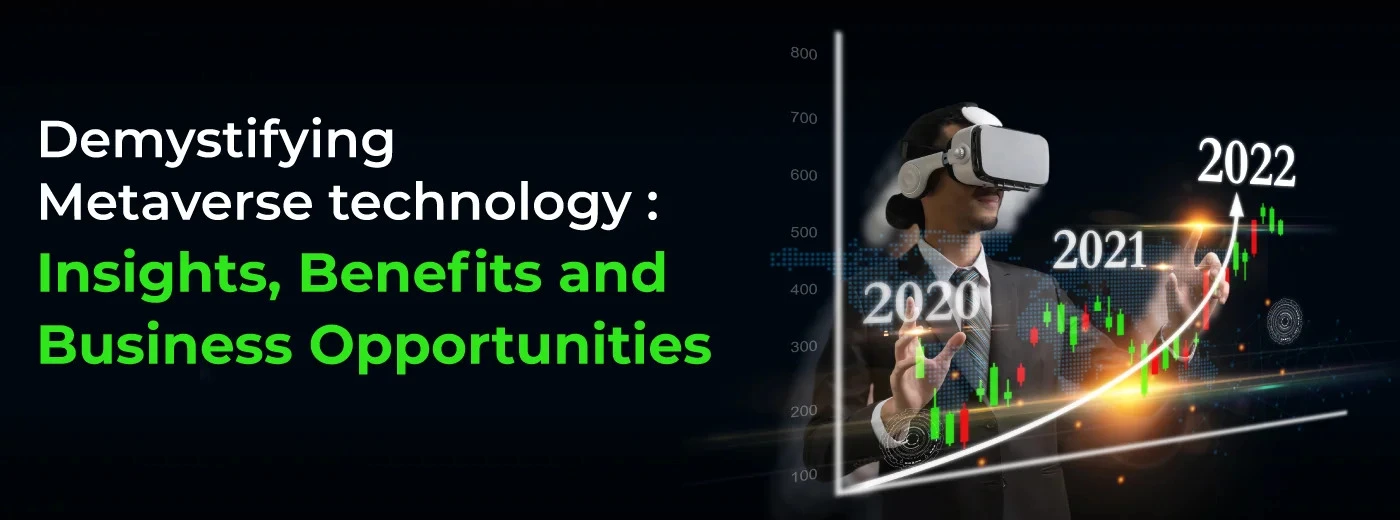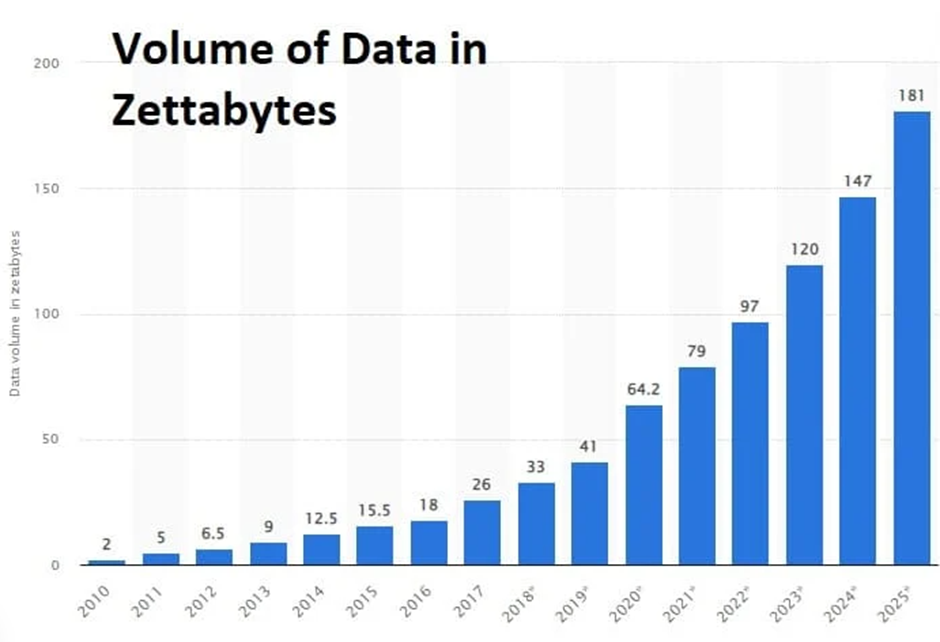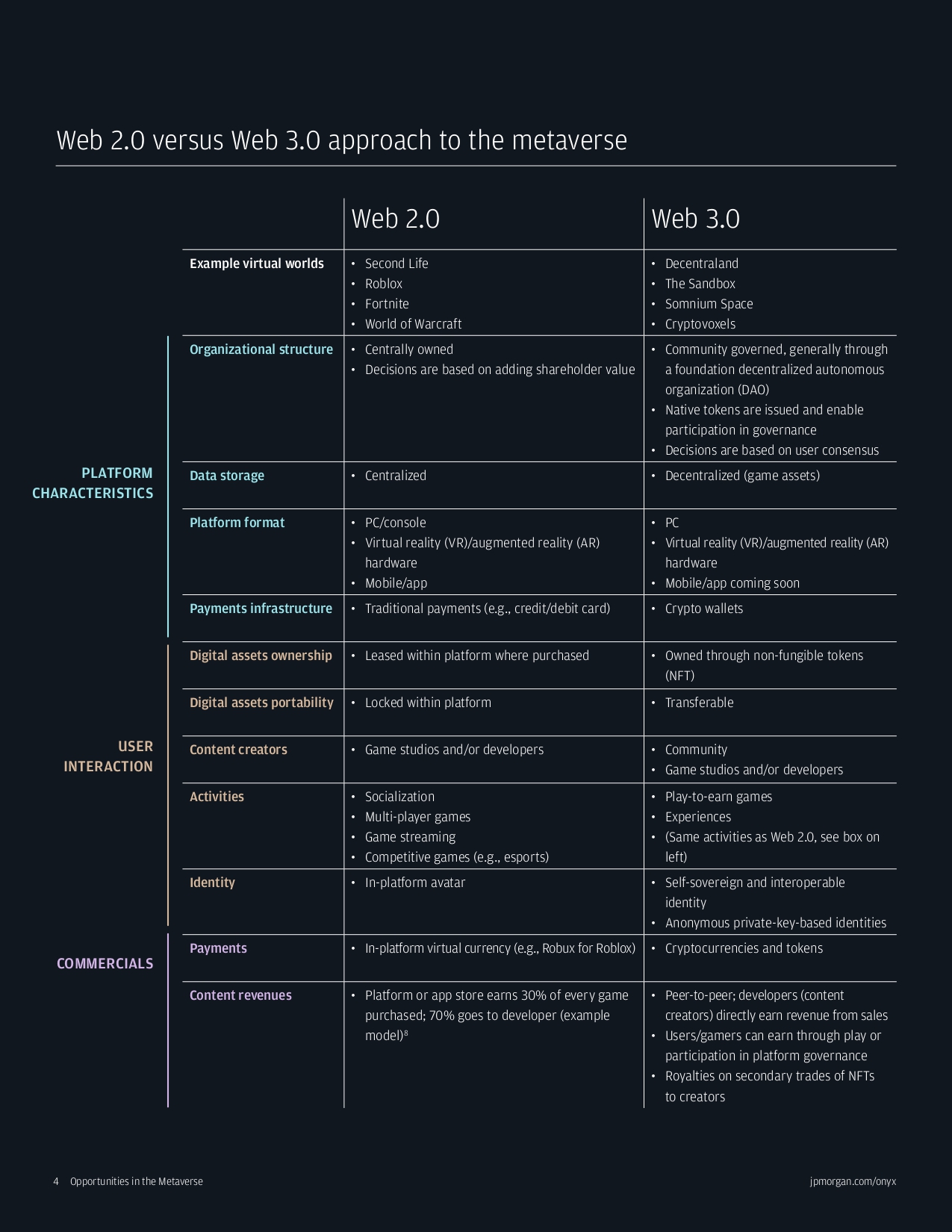
Sign up to receive latest insights & updates in technology, AI & data analytics, data science, & innovations from Polestar Analytics.
According to Bloomberg's estimation, the metaverse market might grow to a whopping $800B by 2024. So, that's a lot of people, using many platforms, performing a lot of transactions, talking to a bunch of people. And what comes from all of this interaction? Well, data, of course.
A survey of 400 IT and technology industry leaders across the US and UK showed that 54% of respondents believe that data will be crucial in sustaining the metaverse.

And to support the metaverse strategy, 84% of leaders across the Telecom, IT, and technology sectors say they are planning to look at procuring data intelligence solutions to be developed inside virtual worlds in the next couple of years. Such technologies are essential to tech industry leaders and their businesses as they measure data outputted by AR and VR technologies to capture any other publicly available data.
Since first being discussed in the year 2021, the metaverse has been a popular topic and is widely seen as the next frontier in the tech and business world. However, we are in the early days of these virtual spaces, and many respondents expressed concerns about data compliance and standards. These concerns demonstrate the requirements for unified metaverse standards and practices to collect different data types.
In this blog, let's talk more about the Metaverse technology or try to point out several visions about it.
In the early '90s, Neal Stephenson first coined "Metaverse" in his science fiction novel, Snow Crash. The metaverse is a relentless convergence of our digital and physical lives, curating a unified, virtual community where we can play, work, relax, and socialize. The metaverse is still in the early stage of its evolution, and there is no singular, all-encompassing definition to which people can turn.
However, themes of what the metaverse is and could be are emerging. The significant point is that there's no one virtual world but numerous worlds, which are reshaping to enable people to extend and deepen social interactions digitally. The metaverse even promises to facilitate accessibility from the comfort of the home, breaking down boundaries and democratizing access to crucial goods, services, and experiences.
Before diving deeper into the metaverse, it's essential to lay the foundation between features of today's metaverse—Web 2.0 characteristics and the emerging Web 3.0 characteristics. See the table below.

Here are a set of features that constitutes the structure of metaverse technology. They are as follows -
Interactive
A metaverse is a collective group of virtual worlds that are connected to act like the real world. Interactive in nature, a metaverse includes - global infrastructure, social connections, and other real-world traits wherein multiple people can be a part of the metaverse at the same time. That means it lets two users interact with each other and with other elements of the metaverse.
Persistent
The Metaverse technology is persistent. Unlike the internet, which can be shut down or closed at any moment, a metaverse cannot be shut down or put away instantly. It is persistent and does not let virtual reality slide out that easily. With massive amounts of information bottled up in a metaverse, the virtual reality stays in the metaphorical world that users enter. For whatever purpose the metaverse is curated, it will remain as long as the technology is in existence.
Real World Replica
Another noticeable feature that must be witnessed in the case of the metaverse is that it is a replica of the real world that we live in. A source of escaping from the reality of our lives, a metaverse will soon become a way of sustainability and entertainment in a virtual reality experience. Owing to the current pandemic situation worldwide, the virtual world has gained even more significance. Conceivably a real-world replica is a path to a world beyond reality.
The metaverse promises a stunningly realistic 3D digital world where you can -for instance, sell and purchase services and goods, enforce and sign contracts, train and recruit talent, and interact with communities and customers. As some tech visionaries imagine the metaverse, this imaginary world won't primarily run on platforms whose owners control governance, data, and transactions. Instead, businesses will be able to take their identities, experiences, currencies, and assets anywhere they want. Also, unlike present web experiences, much of this digital world will preserve even when no one is in it.
For instance, with the metaverse, you could put on a virtual reality (VR) headset and visit a factory site on the other side of the world. You will see and touch its machines, inspect its operations without leaving your desk, and shake hands with the local supervisor. You could even send one digital avatar of yourself to that factory while another meets with your board of directors.
Consumers could hop from one competing for virtual car dealership to another, feeling the wind in their hair as they take test drives. And after you leave that digital recreation of a factory, it will keep producing parallel to your physical factory. The virtual car will await its next virtual driver. Today, many younger consumers already try on virtual clothes at virtual retail stores or buy virtual merchandise for their virtual gaming environments.
Let's navigate what organizations are looking to the metaverse to:
1. Furniture organizations are enabling consumers to drop pieces of furniture into virtual representations of their houses to see how the movables will fit; real estate organizations are doing virtual walkthrough tours of homes for sale, and clothing retailers are letting their customers virtually try on shoes and garments before they purchase. In all cases, the virtual visualizations enable customers to try out the merchandise in a virtual universe before they buy the physical items.
2. Digital twins, which are typically computer programs that utilize real-world data to curate virtual simulations that can predict how a process or product will execute, are being used in new product design, the modeling of manufacturing processes, and aerospace flight simulations. The simulations save time developing and trying out physical models. They can predict fail points in models and techniques that can be corrected digitally and architecturally before being created physically.
3. Virtual reality is being utilized for therapeutic pain management in the healthcare industry. By situating a motion-sensing VR headset on a patient, the patient can enter a 360-degree virtual world that distracts their mind from the pain. With VR, the patient can interact with their virtual world.
4. Augmented reality is being utilized in construction and architecture projects to foresee clashes between actual construction and design. The AR paves a 3D model of a proposed design into an existing space utilizing mobile devices and 3D models.
The contemporary world has already tasted what will be brought to the table. Virtual reality is a significant concept that makes heads turn and think about "What if there was a universe other than the real one?" Even though the covid19 has made us familiar with the circumstances that the technology of the metaverse would be like, humans are still not familiar with the dystopian era that is all set to arrive ahead of them.
An era of virtual connections, no physical contact, and the virtual economy will be astounding and it will take away the taste of social harmony in the real world. Still, this tech will only add to the technological progress that the world will ever see in the coming centuries.
About Author

Content Architect
The goal is to turn data into information, and information into insights.